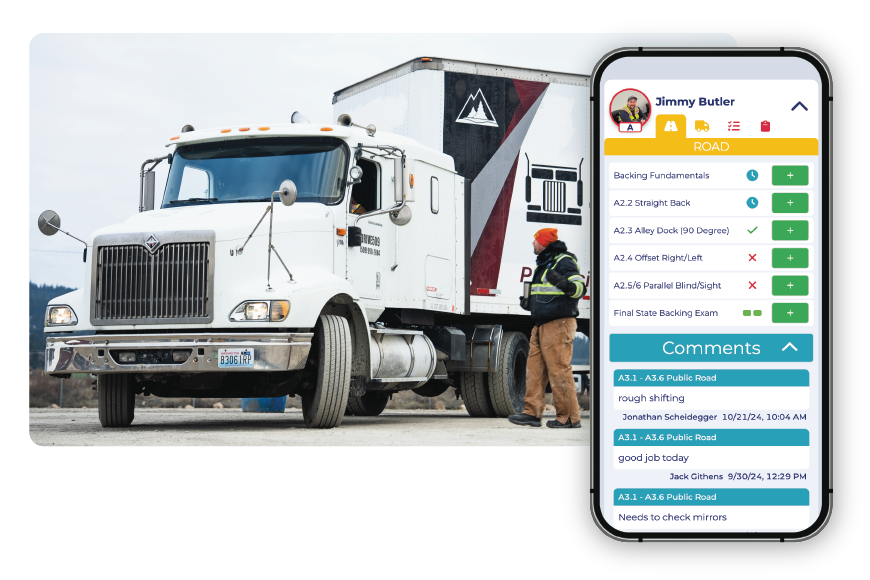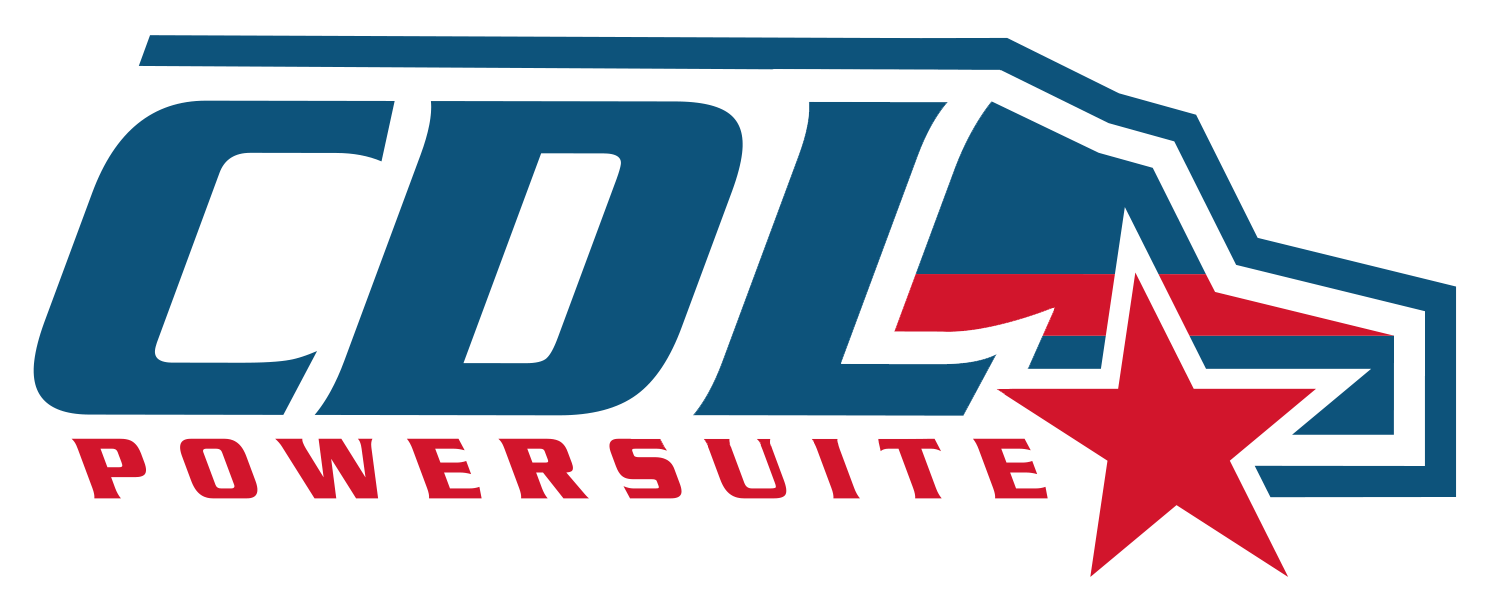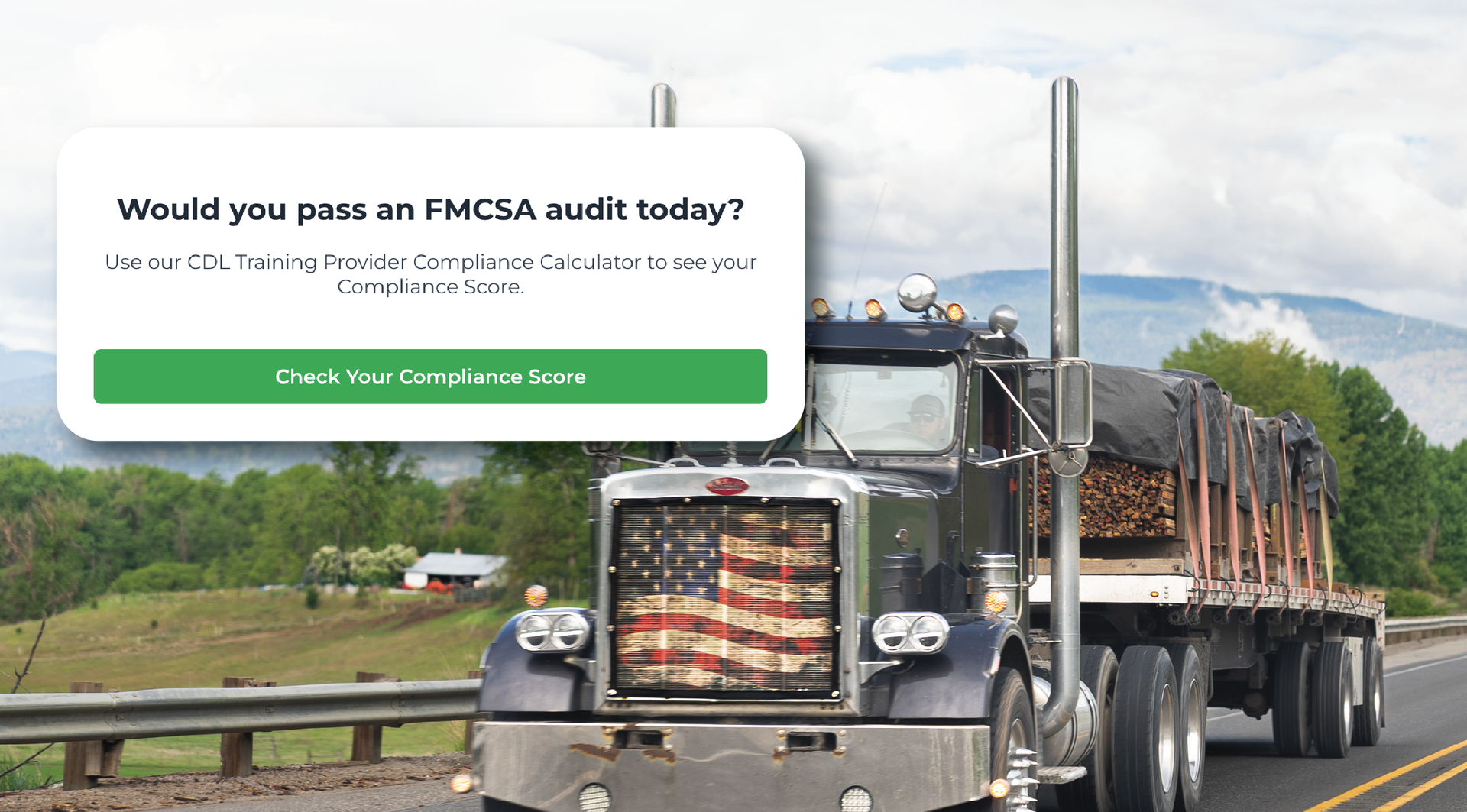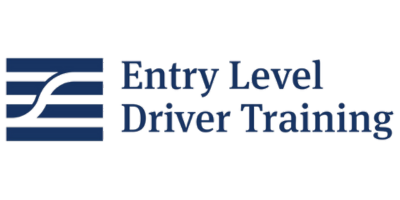The Role of CDL Instructors
Jason Boudreau • February 11, 2025
As the demand for commercial drivers continues to grow, CDL instructors play a vital role in preparing the next generation of safe, skilled, and compliant drivers. But being a CDL instructor involves much more than just teaching behind-the-wheel skills. Instructors must adhere to stringent federal regulations and ensure that their students meet all Entry-Level Driver Training (ELDT) requirements set forth by the Federal Motor Carrier Safety Administration (FMCSA).
In this article, we’ll break down the responsibilities of a CDL instructor, explain the ELDT requirements they must follow, and outline the tools available to help instructors remain compliant and efficient in their roles.

CDL Instructor Requirements
A CDL Instructor is responsible for training commercial driver’s license (CDL) applicants in both theoretical knowledge and practical skills. Instructors guide students through the training process to ensure they are prepared to operate commercial motor vehicles (CMVs) safely and effectively. To become a CDL instructor, you must meet several requirements:
CDL License Requirements:
- Instructors must hold a valid CDL of the same or higher class than the one they are training students to obtain.
- Additionally, they need a minimum of two years of experience driving a commercial motor vehicle or two years as a behind-the-wheel (BTW) instructor.
Certification by an FMCSA-Registered Training Provider:
- All CDL instructors must be certified through an FMCSA-registered training provider, ensuring they follow federally mandated curriculum standards for both theory and BTW training.
Record Keeping and Compliance:
- CDL instructors are responsible for tracking and documenting student proficiency in both theory and BTW training. This includes submitting completed student certifications to the Training Provider Registry (TPR) to verify that each student has met the required ELDT standards.
How CDL Instructors Teach ELDT
ELDT regulations set a national baseline for the training new drivers must complete before obtaining their CDL. CDL instructors must cover both
theory training and
behind-the-wheel (BTW) training, ensuring that each student receives comprehensive instruction and meets FMCSA standards.
Theory Training
Theory training involves classroom-based learning or online education that covers key topics such as:
- Basic vehicle operation
- Safe operating procedures
- Advanced driving practices
- Vehicle systems and reporting malfunctions
- Non-driving activities like Hours of Service and Fatigue Management
Trainees must score at least
80% on their theory assessments to pass. Instructors are responsible for tracking these results and submitting them to the FMCSA via the Training Provider Registry.
Behind-the-Wheel (BTW) Training
Behind-the-wheel training requires students to operate a CMV under the supervision of a CDL instructor. Students must demonstrate proficiency in:
- Basic vehicle control
- Range maneuvers (e.g., straight-line backing, parallel parking)
- Public road driving (e.g., left/right turns, lane changes, and highway driving)
While there is no required minimum number of training hours for BTW instruction, students must demonstrate proficiency in all required skills before they can successfully complete the course.
Compliance Standards for CDL Instructors
CDL instructors are not only responsible for training students but also for staying compliant with federal regulations. Here’s what instructors need to stay compliant with FMCSA and ELDT mandates:
Maintaining DQ Files
CDL instructors must maintain their own Driver Qualification (DQ) files, similar to the requirements for commercial drivers. These files must include:
- A valid CDL license
- Medical certification
- Driving history records
- Proof of training certifications
Keeping these files up-to-date is essential for ensuring compliance with FMCSA and Department of Transportation (DOT) standards.
Staying Current with FMCSA Regulations
As federal regulations continue to evolve, it is crucial for instructors to stay informed on any changes to the ELDT curriculum or compliance requirements. Regular updates to teaching practices and training materials ensure instructors are delivering the most current information to their students.
Certification Standards
CDL instructors must also meet the certification standards outlined by the FMCSA. This includes covering all required topics in both theory and BTW training, ensuring that students meet the minimum requirements before taking their CDL exam
The CDL PowerSuite Solution
Managing these requirements can be overwhelming, but that’s where CDL PowerSuite comes in. Designed by CDL instructors for CDL instructors, our platform simplifies every aspect of ELDT training and compliance. Here’s how CDL PowerSuite can help:
- Track ELDT Student Progress: With the entire ELDT curriculum at your fingertips, you can easily monitor test scores, behind-the-wheel proficiency, and maintain detailed training records for each student.
- Class Scheduling:
Organize and optimize both CDL trainer's and trainee's schedules, everybody knows where to be at all times.
- Automate TPR Submissions: Submit student certifications directly to the FMCSA Training Provider Registry, ensuring you're always compliant.
- Manage DQ Files: Keep your own DQ files organized and up-to-date with our platform, ensuring all necessary documents are easily accessible and compliant.
CDL PowerSuite is continuously updated to meet the latest industry standards, ensuring that CDL instructors have access to the most current tools and resources available. Whether you’re running a CDL school, providing in-house training, or managing a government-operated fleet, CDL PowerSuite is designed to guide you through every step of the ELDT process.






